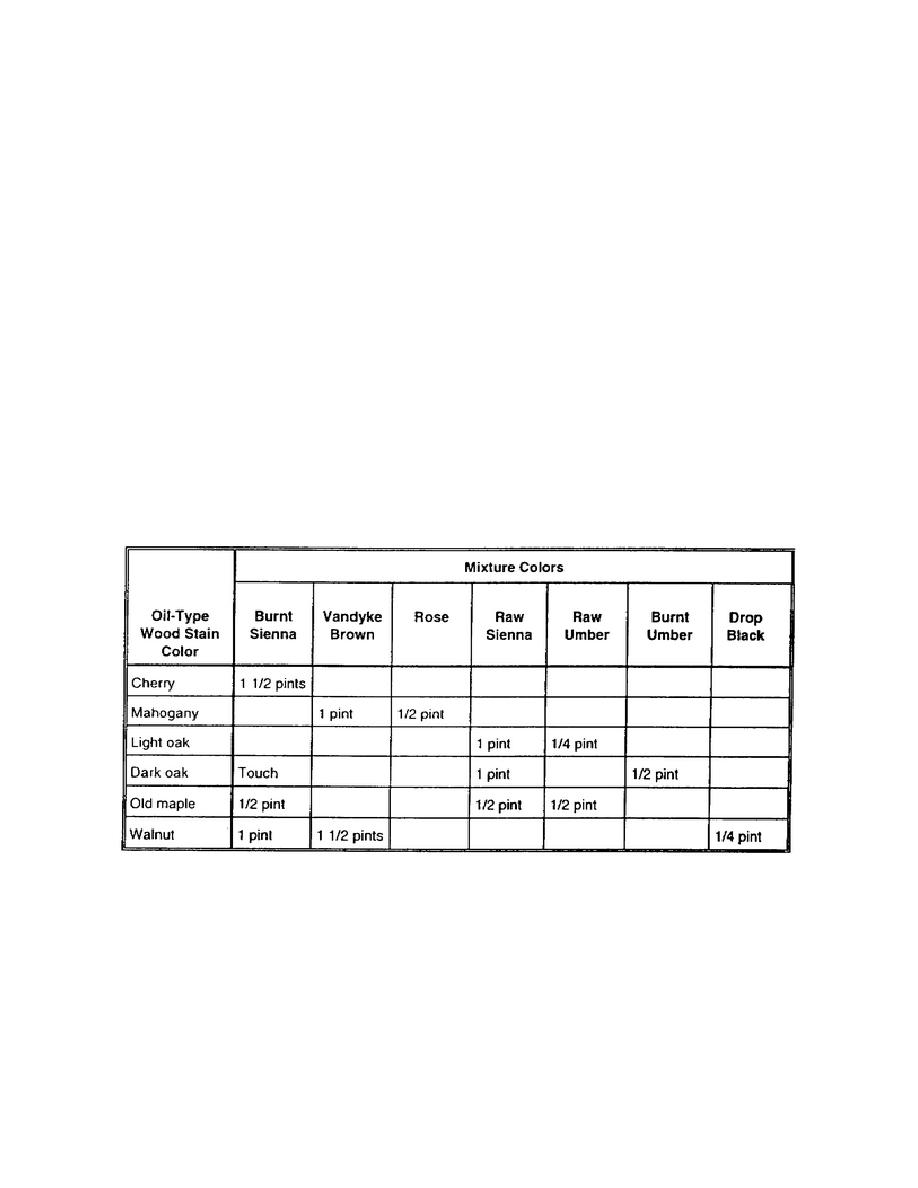
(1) Water stain. Water stain is cheap, penetrates the wood deeply, and is transparent. It
produces an even penetration and gives the most even and clearest tone of all stains. A disadvantage in
its use is that the water raises the grain of the wood that is being finished, requiring extra sanding. Use
water stains for inside woodwork and furniture.
(2) Spirit stain. You make spirit stain by mixing aniline colors in alcohol. They dry quickly,
and the colors are brilliant, transparent, and beautiful. When you use a spirit stain, the surface may be
stained, filled, and shellacked or varnished the same day. For this reason, spirit stains are useful for
repair and touch-up work on floors, woodwork, and furniture and for all sorts of quick jobs. Spirit stains
penetrate old varnish surfaces to a greater depth than other stains, but they are not permanent in sunlight
or very strong artificial light.
(3) Oil stain. An oil stain is probably the most convenient for finishing woodwork of various
kinds. It is easily obtained, easily applied, and does not raise the grain of the wood. It dries slowly
enough to permit brushing and rebrushing without showing lap marks. If the color is too dark after the
stain is applied, you may wipe off some of it to produce a lighter color. Use Table 2-2 to determine
what oil stains to mix, then mix oil stains in a base of 1/2 gallon boiled linseed oil and 12 gallon of
turpentine or mineral spirits. For example, to make mahogany, add 1 pint Vandyke brown and 1 1/2
pints rose to the base.
Table 2-2. Mixing oil stains
(4) Varnish stain. Varnish stain is made by adding a stain to a varnish. When you use a
varnish stain, it is possible to stain and varnish in one operation.
EN0562
2-12



 Previous Page
Previous Page
